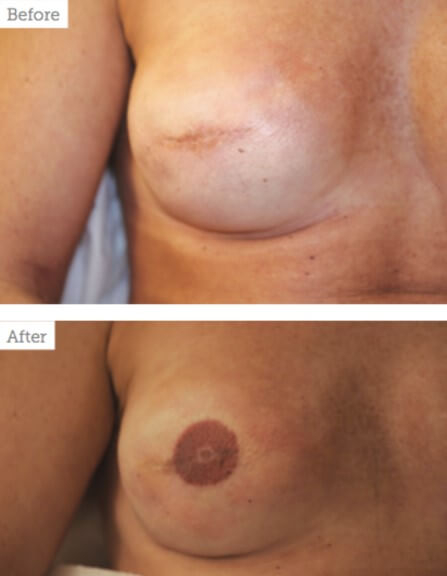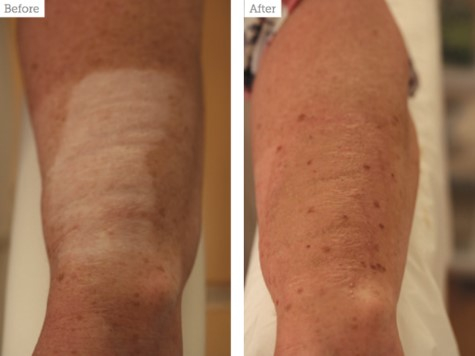When people hear the word "tattoo", they probably think of tattoos that people get for fun, and certainly not medical tattoos.
Medical tattoo is often referred to as cosmetic tattooing, micropigmentation, semi-permanent makeup, and scar cover-up. The procedure can be used to hide various conditions, including alopecia, vitiligo, surgical scars and burns etc.
On estet-portal.com read more about the medical tattoo technique and also read a detailed analysis of two cases of successful scar concealment in the practice of Hina Solanka.
- Medical Tattoo: A Second Chance to Boost the Self-Esteem of Scarred Patients
- Case Study: Areola Reconstruction
- Case Study: Self-Harm Scar Camouflagei
Medical Tattoo: A Second Chance to Boost the Self-Esteem of Scarred Patients
A medical tattoo can change people's attitude towards themselves and increase their self-esteem.
It is important for aesthetic medicine professionals to be aware of medical tattooing as they can refer patients for the procedure.
For example, dermatologist practitioners who cannot help with vitiligo can educate their patients about the possibilities of medical tattooing, and surgeons can refer patients with scars after traumatic surgeries for tattooing.
Medical tattooing is a tattoo technique in which pigment is injected into a selected area of the skin with a disposable thin needle, with the pigment implanted only in the top layer of the skin.
In Hina Solanka's experience, in a conventional body art tattoo, the pigments are implanted too deep into the skin, and therefore cannot convey the required colors that a medical tattoo should replace traditional cosmetics .
It is very important to remember that this procedure only masks scars and pigmentation, not makes them disappear.
The idea is to make the scar less noticeable and not draw too much attention to it.
Dental tattoo or tattoos on teeth
Case Study: Areola Reconstruction

The patient underwent reconstruction of the areola over the scar after mastectomy.
Using circular motions, the technician was able to create a rippling effect, making the areola look textured and natural.
Several lighter shades were used to create the illusion of a protruding nipple.
In each zone, the specialist worked with different needles to make the result as close to natural as possible.
This type of procedure can take two sessions or more.
If the scar tissue is dense then care must be taken when inserting the needle to correctly position the pigment to achieve the desired results.
The procedure usually takes about two hours.
There may be some soreness or swelling after the procedurery.
Read the most interesting articles in Telegram!
Case Study: Camouflage Self-Harm Scars
Patients who suffer from self-injury often find it very difficult to talk to anyone about their problem, and many manage to hide their scars from friends and family for decades with medical tattoos.

This patient underwent a successful skin graft procedure to cover self-harm scars on his forearm.
The operation was performed two years before the cosmetic tattoo.
A medical tattoo can usually be done one year after a skin graft.
The presence of dense scar tissue meant that the medical tattoo procedure had to be done very slowly, using a thin needle to implant the pigment into the skin using a pointillism technique, creating microdots across the entire scar.
This method also helps to loosen dense scar tissue.
The patient was delighted with the result, which took almost four hours to achieve.
You may also be interested in: Principle of tattoo removal using Q-switch laser
It is important for aesthetic medicine practitioners to consider the possibilities of medical tattooing for their patients, and in cases where medical practitioners may not be able to cure a patient, medical tattooing can seriously enhance quality of life person.







Add a comment